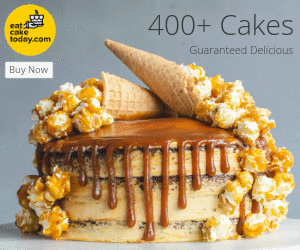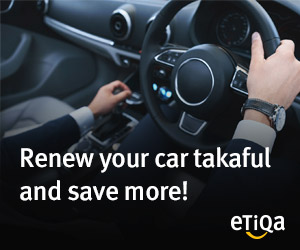A business model is a company's business plan for making a profit. It identifies the products or services the business will sell, the target market it has identified, and the expenses it anticipates.
A business model is sometimes confused with business plan. The business model should be a section of the business plan. The business plan is much more detailed. It presents the strategies that will be used to implement the model, the resources needed including employees and capital, and has detailed projections of the hoped for results from implementing the model.
Every business model is needed to answer a series of questions:
➤ What kind of products or services to be provided?
A business model is sometimes confused with business plan. The business model should be a section of the business plan. The business plan is much more detailed. It presents the strategies that will be used to implement the model, the resources needed including employees and capital, and has detailed projections of the hoped for results from implementing the model.
Every business model is needed to answer a series of questions:
➤ What kind of products or services to be provided?
➤ Who’s your target customer?
➤ What customer problems or challenges do you solve?
➤ What value do you deliver?
➤ How will you reach, acquire, and keep customers?
➤ How will you define and differentiate your offering?
➤ How will you generate revenue?
➤ What’s your cost structure?
➤ What’s your profit margin?
How a Business Model Works?
A primary component of the business model is the value proposition. This is a description of the goods or services that a company offers and why they are desirable to customers or clients, ideally stated in a way that differentiates the product or service from its competitors.
A business model for a new enterprise should also cover projected startup costs and sources of financing, the target customer base for the business, marketing strategy, a review of the competition, and projections of revenues and expenses.
A common mistake in creating a business model is underestimating the costs of funding the business until it becomes profitable. Counting costs to the introduction of a product is not enough. A company has to keep the business running until revenues exceed expenses.
Another example: Walmart follows a business model of offering the lowest possible price so it can sell more products to maximize its profit that way. By contrast, another retailer like Coach follows a business model of selling fewer, higher quality items while earning a higher profit per product.
Examples of Business Models
1. Affiliate
Affiliate marketing business model is a commission-based model where the affiliate builds its business around promoting a partner’s product and directs all its efforts to convince its followers and users to buy the same. In return, the affiliate gets a commission for every sale referred.
This business model is most frequently found online, the affiliate model uses links embedded in content instead of visual advertisements that are easily identifiable. For example, if you run a book review website, you could embed affiliate links to Amazon within your reviews that allow people to buy the book you are reviewing. Amazon will pay you a small commission for every sale that you refer to them.
2. Brokerage
Brokerage businesses connect buyers and sellers and help facilitate a transaction. They charge a fee for each transaction to either the buyer or the seller and sometimes both. One of the most common brokerage businesses is a real estate agency, but there are many other types of brokerages such as freight brokers, stock brokers, and Forex brokers.
3. Concierge / Customization
Some businesses take existing products or services and add a custom element to the transaction that makes every sale unique for the given customer. For example, custom travel agents who book trips and experiences for wealthy clients. You can also find customization happening at a larger scale with products like Nike’s custom sneakers.
4. Advertising
The advertising business model has become more sophisticated as the world has transitioned from print to online. The fundamentals of the model revolve around creating content that people want to read or watch and then displaying advertising to your readers or viewers.
In an advertising business model, you have to satisfy two customer groups: your readers or viewers, and your advertisers. This business model is popular with media publishers like Youtube, Forbes, etc. Advertisers find their exact customer with the benefit of improved data-driven targeting meanwhile users receive free content or communications.
6. Franchise
A franchise is a type of license that a party (franchisee) acquires to allow them to have access to a business's (franchiser) proprietary knowledge, processes, and trademarks in order to allow the party to sell a product or provide a service under the business's name. In exchange for gaining the franchise, the franchisee usually pays the franchiser an initial start-up and annual licensing fees.
7. Freemium
With a freemium business model, you’re giving away part of your product or service for free and charging for premium features or services. Freemium isn’t the same as a free trial where customers only get access to a product or service for a limited period of time. Instead, freemium models allow for unlimited use of basic features for free and only charge customers who want access to more advanced functionality.
12. Razor Blade
The razor blade business model is adopted to sell a durable product below cost to increase volume sales of a high-margin, disposable component of that product (blades). This is why razor blade companies practically give away the razor handle, assuming that you’ll continue to buy a large volume of blades over the long term. The goal is to tie a customer into a system, ensuring that there are many additional, ongoing purchases over time.
15. Disintermediation
If you want to sell something in your stores, you typically work through a series of middlemen to get your product from the factory to the store shelf.
Disintermediation is when you sidestep everyone in the supply chain and sell directly to consumers, allowing you to potentially lower costs to your customers and have a direct relationship them as well.
➤ What customer problems or challenges do you solve?
➤ What value do you deliver?
➤ How will you reach, acquire, and keep customers?
➤ How will you define and differentiate your offering?
➤ How will you generate revenue?
➤ What’s your cost structure?
➤ What’s your profit margin?
How a Business Model Works?
A primary component of the business model is the value proposition. This is a description of the goods or services that a company offers and why they are desirable to customers or clients, ideally stated in a way that differentiates the product or service from its competitors.
A business model for a new enterprise should also cover projected startup costs and sources of financing, the target customer base for the business, marketing strategy, a review of the competition, and projections of revenues and expenses.
A common mistake in creating a business model is underestimating the costs of funding the business until it becomes profitable. Counting costs to the introduction of a product is not enough. A company has to keep the business running until revenues exceed expenses.
The business model is geared to the company's goals. Decisions should have consequences that enable the company to achieve its goals. For example, the Xerox PARC research center established in the 1970s developed technological innovations such as laser printing, Ethernet and graphical user interfaces. However, due to a lack of focus on the parent company's goals, Xerox PARC was unable to translate these innovations into new business models for Xerox.
Components of Business Model
➤ Value Proposition - A description about the customer problem, the product that addresses the problem, and the value of the product from the customer's perspective.
➤ Market Segment - The group of customers to target, recognizing that different market segments have different needs.
➤ Value Chain Structure - The firm's position and activities in the value chain and how the firm will capture part of the value that it creates in the chain.
➤ Revenue Generation and Margins - How revenue is generated (sales, leasing, subscription, support, etc.), the cost structure, and target profit margins.
➤ Position in Value Network - Identification of competitors, complementors, and any network effects that can be utilized to deliver more value to the customer.
➤ Competitive Strategy - How the company will attempt to develop a sustainable competitive advantage, for example, by means of a cost, differentiation, or niche strategy.
Types of Business Models
There are as many types of business models as there are many types of business. Companies adopt different business models depending on their products and services. Companies choose or invent the model that will generate the most profit. The model determines the sales and marketing strategies of the company, including branding, pricing, sales channels and potential partners.
For instance, telecommunication operators often choose to sell mobile phone sets at very low prices and to generate most of their revenues from mobile plans which are based on services consumed, such as minutes spent on calls. This model is attractive as it generates an ongoing revenue stream along with the potential to offer new services and features in the future, for additional revenues.
Components of Business Model
➤ Value Proposition - A description about the customer problem, the product that addresses the problem, and the value of the product from the customer's perspective.
➤ Market Segment - The group of customers to target, recognizing that different market segments have different needs.
➤ Value Chain Structure - The firm's position and activities in the value chain and how the firm will capture part of the value that it creates in the chain.
➤ Revenue Generation and Margins - How revenue is generated (sales, leasing, subscription, support, etc.), the cost structure, and target profit margins.
➤ Position in Value Network - Identification of competitors, complementors, and any network effects that can be utilized to deliver more value to the customer.
➤ Competitive Strategy - How the company will attempt to develop a sustainable competitive advantage, for example, by means of a cost, differentiation, or niche strategy.
Types of Business Models
There are as many types of business models as there are many types of business. Companies adopt different business models depending on their products and services. Companies choose or invent the model that will generate the most profit. The model determines the sales and marketing strategies of the company, including branding, pricing, sales channels and potential partners.
For instance, telecommunication operators often choose to sell mobile phone sets at very low prices and to generate most of their revenues from mobile plans which are based on services consumed, such as minutes spent on calls. This model is attractive as it generates an ongoing revenue stream along with the potential to offer new services and features in the future, for additional revenues.
Another example: Walmart follows a business model of offering the lowest possible price so it can sell more products to maximize its profit that way. By contrast, another retailer like Coach follows a business model of selling fewer, higher quality items while earning a higher profit per product.
Examples of Business Models
1. Affiliate
Affiliate marketing business model is a commission-based model where the affiliate builds its business around promoting a partner’s product and directs all its efforts to convince its followers and users to buy the same. In return, the affiliate gets a commission for every sale referred.
This business model is most frequently found online, the affiliate model uses links embedded in content instead of visual advertisements that are easily identifiable. For example, if you run a book review website, you could embed affiliate links to Amazon within your reviews that allow people to buy the book you are reviewing. Amazon will pay you a small commission for every sale that you refer to them.
2. Brokerage
Brokerage businesses connect buyers and sellers and help facilitate a transaction. They charge a fee for each transaction to either the buyer or the seller and sometimes both. One of the most common brokerage businesses is a real estate agency, but there are many other types of brokerages such as freight brokers, stock brokers, and Forex brokers.
3. Concierge / Customization
Some businesses take existing products or services and add a custom element to the transaction that makes every sale unique for the given customer. For example, custom travel agents who book trips and experiences for wealthy clients. You can also find customization happening at a larger scale with products like Nike’s custom sneakers.
4. Advertising
The advertising business model has become more sophisticated as the world has transitioned from print to online. The fundamentals of the model revolve around creating content that people want to read or watch and then displaying advertising to your readers or viewers.
In an advertising business model, you have to satisfy two customer groups: your readers or viewers, and your advertisers. This business model is popular with media publishers like Youtube, Forbes, etc. Advertisers find their exact customer with the benefit of improved data-driven targeting meanwhile users receive free content or communications.
5. Fractionalization
Fractionalization consists of letting customers buy a portion of a product or service. A good example of this is a time-sharing condominium. People buy part of the condominium and can use it during a certain time of the year that they purchased it from.
Fractionalization consists of letting customers buy a portion of a product or service. A good example of this is a time-sharing condominium. People buy part of the condominium and can use it during a certain time of the year that they purchased it from.
It’s a great model when your target customers only want your product or service part of the time. They get the full benefits but don’t have to pay full price.
6. Franchise
A franchise is a type of license that a party (franchisee) acquires to allow them to have access to a business's (franchiser) proprietary knowledge, processes, and trademarks in order to allow the party to sell a product or provide a service under the business's name. In exchange for gaining the franchise, the franchisee usually pays the franchiser an initial start-up and annual licensing fees.
When a business wants to increase its market share or increase its geographical reach at a low cost, it may create a franchise for its product and brand name. A franchise is a joint venture between a franchiser and a franchisee. The franchiser is the original or existing business that sells the right to use its name and idea. The franchisee is the individual who buys into the original company by purchasing the right to sell the franchiser's goods or services under the existing business model and trademark.
Franchises are a very popular method for people to start a business, especially for those who wish to operate in a highly competitive industry like the fast-food industry. One of the biggest advantages of purchasing a franchise is that you have access to an established company's brand name, meaning that you do not need to spend further resources to get your name and product out to customers.
7. Freemium
With a freemium business model, you’re giving away part of your product or service for free and charging for premium features or services. Freemium isn’t the same as a free trial where customers only get access to a product or service for a limited period of time. Instead, freemium models allow for unlimited use of basic features for free and only charge customers who want access to more advanced functionality.
For instance, Dropbox gives you a small amount of free cloud storage and asks you to upgrade to a paid plan if you need more space. Meanwhile, Spotify offers free music but has ads. If a user buys a paid plan, they get rid of the ads.
8. Leasing
Leasing is like renting. At the end of a lease agreement, a customer needs to return the product that they were renting from you. Leasing is most commonly used for high-priced products where customers may not be able to afford a full purchase but could instead afford to rent the product for a while.
9. Low-Touch
With a low-touch business model, companies lower their prices by providing fewer services. The best examples of this type of business model are budget airlines and furniture sellers such as IKEA.
8. Leasing
Leasing is like renting. At the end of a lease agreement, a customer needs to return the product that they were renting from you. Leasing is most commonly used for high-priced products where customers may not be able to afford a full purchase but could instead afford to rent the product for a while.
9. Low-Touch
With a low-touch business model, companies lower their prices by providing fewer services. The best examples of this type of business model are budget airlines and furniture sellers such as IKEA.
This low-touch business model means that customers need to either purchase additional services or do some things themselves in order to keep costs down. For example, IKEA and AirAsia.
10. Online Marketplace
Marketplaces allow sellers to list items for sale and provide customers with easy tools for connecting to sellers. The marketplace business model can generate revenue from a variety of sources including fees to the buyer or the seller for a successful transaction, additional services for helping advertise seller’s products, and insurance so buyers have peace of mind. For example, Lazada, Shopee, Tmall, Taobao, eBay and Airbnb.
11. Pay As You Go
Instead of pre-purchasing a certain amount of something, such as electricity or mobile phone airtime, customers get charged for actual usage at the end of a billing period. The pay-as-you-go model is most common in home utilities. For example, car2go lets you pay for car rentals by the minute, hour, or day.
Marketplaces allow sellers to list items for sale and provide customers with easy tools for connecting to sellers. The marketplace business model can generate revenue from a variety of sources including fees to the buyer or the seller for a successful transaction, additional services for helping advertise seller’s products, and insurance so buyers have peace of mind. For example, Lazada, Shopee, Tmall, Taobao, eBay and Airbnb.
11. Pay As You Go
Instead of pre-purchasing a certain amount of something, such as electricity or mobile phone airtime, customers get charged for actual usage at the end of a billing period. The pay-as-you-go model is most common in home utilities. For example, car2go lets you pay for car rentals by the minute, hour, or day.
12. Razor Blade
The razor blade business model is adopted to sell a durable product below cost to increase volume sales of a high-margin, disposable component of that product (blades). This is why razor blade companies practically give away the razor handle, assuming that you’ll continue to buy a large volume of blades over the long term. The goal is to tie a customer into a system, ensuring that there are many additional, ongoing purchases over time.
Another good example of this is the personal printer. They’re cheap to buy, but the ink is very expensive and high margin.
13. Reverse Razor Blade
You offer the “blades” at a very low cost in order to get people to buy the expensive and high margin “razor.”
13. Reverse Razor Blade
You offer the “blades” at a very low cost in order to get people to buy the expensive and high margin “razor.”
Flipping the razor blade model around, you can offer a high-margin product and promote sales of a low-margin companion product. Similar to the razor blade model, customers are often choosing to join an ecosystem of products. But, unlike the razor blade model, the initial purchase is the big sale where a company makes most of its money. The add-ons are just there to keep customers using the initially expensive product. For example, Apple’s iPod and iTunes.
Another example of this is Amazon Kindle books, which are very cheap, and may tempt consumers into purchasing an expensive Kindle to read the books on.
14. Subscription
In this business model, consumers get charged a subscription fee to get access to a service. While magazine and newspaper subscriptions have been around for a long time, the model has now spread to software and online services. For example, Netflix, Iflix, Viu, and Astro.
This business model produces recurring income through repeat purchases and lets you keep customers over a long-term contract.
14. Subscription
In this business model, consumers get charged a subscription fee to get access to a service. While magazine and newspaper subscriptions have been around for a long time, the model has now spread to software and online services. For example, Netflix, Iflix, Viu, and Astro.
This business model produces recurring income through repeat purchases and lets you keep customers over a long-term contract.
15. Disintermediation
If you want to sell something in your stores, you typically work through a series of middlemen to get your product from the factory to the store shelf.
Disintermediation is when you sidestep everyone in the supply chain and sell directly to consumers, allowing you to potentially lower costs to your customers and have a direct relationship them as well.
Tesla is a great example of this. Instead of selling cars through a dealership, you could buy online directly from Tesla and skip the salesman. Not only, it is more convenient but it also reduces costs for consumers.
16. Crowdsourcing
If you can bring together a large number of people to contribute content to your site, then you’re crowdsourcing. For example, Threadless lets designers submit t-shirt designs and gives the designers a percentage of sales.
Companies that are trying to solve difficult problems often publish their problems openly for anyone to try and solve. Successful solutions get rewards and the company can then grow their business. The key to a successful crowdsourcing business is providing the right rewards to entice the “crowd” while also enabling you to build a viable business.
Lego is a crowdsourcing champion. Any user can submit a design that other users vote for. The idea with the highest number of votes is moved to production. While the designer gets a 1% royalty, the company enjoys increased customer engagement as well.
If you can bring together a large number of people to contribute content to your site, then you’re crowdsourcing. For example, Threadless lets designers submit t-shirt designs and gives the designers a percentage of sales.
Companies that are trying to solve difficult problems often publish their problems openly for anyone to try and solve. Successful solutions get rewards and the company can then grow their business. The key to a successful crowdsourcing business is providing the right rewards to entice the “crowd” while also enabling you to build a viable business.
Lego is a crowdsourcing champion. Any user can submit a design that other users vote for. The idea with the highest number of votes is moved to production. While the designer gets a 1% royalty, the company enjoys increased customer engagement as well.
17. eCommerce
eCommerce business model is an upgradation of the traditional brick-and-mortar business model. It focuses on selling products online.
18. Brick and Mortar
Brick-and-mortar is a traditional business model where the retailers, wholesalers, and manufacturers deal with the customers face-to-face in an office or a shop that the business owns or rents.
19. Bricks and Clicks
A company that has both an online and offline presence allows customers to pick up products from the physical stores while they can place the order online. This model gives flexibility to the consumer to collect ready packed parcel conveniently from the store nearby.
20. Dropshipping
Dropshipping is an online business model where the merchant lists products online and markets it but it doesn’t keep an inventory or handle the shipping. Instead, it purchases the products from the third party suppliers when a customer places an order and then delivers directly to the customer.
21. Network Marketing
Network marketing or multi-level marketing involves a pyramid structured network of people who sell a company’s products. The model runs on a commission basis where the participants are remunerated when they make a sale of the company’s product or their recruits make a sale of the product.
Network marketing business model works on direct marketing and direct selling philosophy where there are no retail shops but the offerings are marketed to the target market directly by the participants. The market is tapped by making more and more people part of the pyramid structure where they make money by selling more goods and getting more people on board.
eCommerce business model is an upgradation of the traditional brick-and-mortar business model. It focuses on selling products online.
18. Brick and Mortar
Brick-and-mortar is a traditional business model where the retailers, wholesalers, and manufacturers deal with the customers face-to-face in an office or a shop that the business owns or rents.
19. Bricks and Clicks
A company that has both an online and offline presence allows customers to pick up products from the physical stores while they can place the order online. This model gives flexibility to the consumer to collect ready packed parcel conveniently from the store nearby.
20. Dropshipping
Dropshipping is an online business model where the merchant lists products online and markets it but it doesn’t keep an inventory or handle the shipping. Instead, it purchases the products from the third party suppliers when a customer places an order and then delivers directly to the customer.
21. Network Marketing
Network marketing or multi-level marketing involves a pyramid structured network of people who sell a company’s products. The model runs on a commission basis where the participants are remunerated when they make a sale of the company’s product or their recruits make a sale of the product.
Network marketing business model works on direct marketing and direct selling philosophy where there are no retail shops but the offerings are marketed to the target market directly by the participants. The market is tapped by making more and more people part of the pyramid structure where they make money by selling more goods and getting more people on board.
Business Model Canvas
There are nine elements or building blocks which make up the business model canvas:
√ Customer Segments: Who are your customers?
√ Value Proposition: Why do customers buy from you? What is the values you provide or the needs you satisfy?
√ Channels: How are your products and services delivered to the market?
√ Customer Relationships: How do you get, keep, and grow your customers?
√ Revenue Streams: How does your business earn money?
√ Key Resources: What unique strategic resources does your business have or need?
√ Key Activities: What unique strategic activities does your business perform to deliver your value proposition?
√ Key Partnerships: What non-key activities can you outsource to enable you to focus more on your key activities.
√ Cost Structures: What are the major costs incurred by your business?
1. Customer Segments
In this building block, you enter the different customer segments that you will serve. If you can, create one or more persona for each segment you serve. A persona is simply a relatable description of each customer type you serve.
Many businesses will serve just one customer segment, but not all. For example, Google serves two customer segments, people performing searches as well as advertisers.
If you think about breaking down the advertiser customer segment into personas, then there are many different types of advertisers you might identify. For example, Fortune 500 companies such as Nike with massive advertising budgets might be one persona, whereas small one-man businesses might form another.
2. Value Proposition
The value proposition describes the value that you deliver to each customer segment. What problems do you solve for each customer segment? What needs do you satisfy?
The Value Proposition answers the question, “why will customers buy from us?”.
3. Channels
Channels refer to how your products or services are sold to customers. To complete this section ask yourself how do your customers want to be reached? How are you reaching them now?
Broadly speaking, you can either have your own channels or partner with someone else. Your own channels might include any combination of stores you own, a sales force you employ, or your website. Partner channels could include a multitude of options, from using a wholesaler to working with affiliates to sell your products or even using Google Adsense.
4. Customer Relationships
The Customer Relationships building block answers the question of how you get, keep, and grow customers.
🠊 Get: How do customers find out about you and make their initial purchase? For example, this could be through advertising on Google.
🠊 Keep: How do you keep customers? For example, excellent customer service might help keep customers.
🠊 Grow: How do you get our customers to spend more? For example, you could send out a monthly newsletter to keep them informed about your latest products.
5. Revenue Streams
Where does the money come from? In this building block, you state how your revenue is generated.
You’re actually trying to figure out what strategy you’ll use to capture the most value from your customers? Will customers simply pay a one-time fee? Will you have a monthly subscription fee? Perhaps you give away your product for free like Skype and hope that some portion of customers upgrade to the paid premium product?
6. Key Resources
This building block describes your most important strategic assets that are required to make your business model work.
Broadly speaking, resources can fall into one of four categories:
🠊 Physical: such as buildings, vehicles, machines, and distribution networks.
🠊 Intellectual: such as brands, specialist knowledge, patents and copyrights, partnerships, and customer databases.
🠊 Human: sometimes your employees will be your most key resource, this is particularly true in creative and knowledge-intensive industries.
🠊 Financial: such as lines of credit, cash balances etc.
7. Key Activities
The Key Activities are the most important strategic things you must do to make the business model work. Key Activities should be directly relatable to your value proposition. If your Key Activities are not relatable to your Value Proposition then something is wrong, because the activities you view as most important aren’t delivering any value to customers.
Key Activities can typically be broken down into three broad categories:
🠊 Production: refers to delivering your product. You will typically do this to either a high quality or a high quantity.
🠊 Problem Solving: Consultancies and other service organizations often have to come up with new solutions to individual customer problems.
🠊 Platform / Network: Networks, software platforms can function as a platform. For example, a key activity for Facebook is updating the platform.
8. Key Partners
In this building block, you list the tasks and activities that are important but which you will not do yourself. Instead, you will use suppliers and partners to make the business model work.
Let’s look at Spotify. Spotify’s key activity is updating its platform. However, as it doesn’t produce its own music one of the key partnerships of Spotify will be the deals it strikes with record labels and publishing houses, without which it would have no music!
9. Cost Structure
In the Cost Structure building block, we want to map key activities to costs. We also want to ensure that costs are aligned with our Value Proposition.
Comprehensive Criteria for a Successful Business Model
1. What is the Effort for Your Customers to Switch to Another Company?
The more time, effort or money it takes a customer to switch to another company's product or service, the more likely it is that the customer will remain loyal to a company. A good example of how switching costs were consciously implemented in the design of a business model is Apple's iPod launch in 2001, when the company advertised the i-Pod with the slogan "thousand sounds in a pocket". However, the product launch was not only about the product innovation "iPod". Apple pursued a business model strategy to encourage customers to copy all their music on iTunes and the iPod to make switching to another music platform more difficult. This decision ultimately laid the foundation for Apple's strong position in the music sector and numerous other innovations.
2. How Scalable is Your Business Model?
Scalability describes how a business model can be expanded without increasing costs to the same extent. Software and web-based business models are naturally easier to scale than those based on physical values. But there are also major differences in digital business models. An impressive example of scalability is Facebook. With only a few thousand employees, an attractive product was created for millions of users. Only few other companies were able to achieve such a high rate of users per employee.
3. Does Your Business Model Produce Recurring Revenues?
Recurring revenues have two main advantages: the "sales costs" are generated only once and the company has a better orientation on how much it will earn in the future.
A nice example of recurring revenue is the software provider - Redhat. It provides open source software on a subscription basis. In this business model, customers do not pay for new software as it is constantly updated. Microsoft and other software service providers also use this business model.
Other examples include printers and generating recurring revenues from the sale of printer cartridges. Similarly, Apple's sales of content and apps, which generate ongoing revenue compared to hardware sales, are growing.
4. How Much Does Your Business Model Encourage Customers and Other Players to Create Free Added Value for Your Company?
While others do the work for you, you earn money. IKEA has implemented this approach with its home-made furniture. Customers assemble their own furniture and IKEA saves a lot of money. Facebook is based on a similar basis, in that it merely provides the platform and leaves content production to the users.
5. How Well Does Your Business Model Protect You From the Competition?
A good business model not only produces great products, it also offers long-term protection from competitors. Strong business models are difficult to compete. Apple's competitive advantage is based not only on its innovative products, but above all on its strong business model. For Samsung, for example, it is easier to copy the iPhone than to build an ecosystem such as Apple's App Store, which manages thousands of applications.
6. Is Your Cost Model Substantially Better Than That of Your Competitors?
Saving costs is a common practice in cost management. Some business models go beyond this and place their cost structure on a different basis. Skype, for example, offers communication solutions that are comparable to those offered by a conventional telecommunications company but free of charge or at a low price. Skype's business model is based on a cost structure that primarily includes personnel costs, while the telecoms company has huge spending on infrastructure.
Final Thoughts
A successful business model must constantly create value for its customers and for itself. Therefore, even established companies have to constantly review their business models and further develop or reinvent them.
Edited by: 浪子
Bibliography
Carol M. Kopp. (2019). What Is a Business Model? Retrieved from https://www.investopedia.com/terms/b/businessmodel.asp
Business Model. (2019). Retrieved from https://investinganswers.com/dictionary/b/business-model
The Business Model. (n.d.). Retrieved from http://www.quickmba.com/entre/business-model/
Sourobh Das. (2019). What is a Business Model? 24 Types of Business Models. Retrieved from https://www.feedough.com/what-is-a-business-model/
Aashish Pahwa. (2019). Dropshipping Business Model | How to Start a Dropshipping Business? Retrieved from https://www.feedough.com/dropshipping-business-model-how-to-start-a-dropshipping-business/
Sourobh Das. (2017). Your Complete Guide to Crowdsourcing. Retrieved from https://www.feedough.com/crowdsourcing-guide/
What is a Business Model? (n.d.). Retrieved from https://www.dummies.com/business/start-a-business/business-plans/defining-your-business-model/
Brian Hill. (n.d.). The Concept of a Business Model. Retrieved from https://smallbusiness.chron.com/concept-business-model-3866.html
Edited by: 浪子
Bibliography
Carol M. Kopp. (2019). What Is a Business Model? Retrieved from https://www.investopedia.com/terms/b/businessmodel.asp
Business Model. (2019). Retrieved from https://investinganswers.com/dictionary/b/business-model
The Business Model. (n.d.). Retrieved from http://www.quickmba.com/entre/business-model/
Sourobh Das. (2019). What is a Business Model? 24 Types of Business Models. Retrieved from https://www.feedough.com/what-is-a-business-model/
Aashish Pahwa. (2019). Dropshipping Business Model | How to Start a Dropshipping Business? Retrieved from https://www.feedough.com/dropshipping-business-model-how-to-start-a-dropshipping-business/
Sourobh Das. (2017). Your Complete Guide to Crowdsourcing. Retrieved from https://www.feedough.com/crowdsourcing-guide/
What is a Business Model? (n.d.). Retrieved from https://www.dummies.com/business/start-a-business/business-plans/defining-your-business-model/
Brian Hill. (n.d.). The Concept of a Business Model. Retrieved from https://smallbusiness.chron.com/concept-business-model-3866.html
Franz Emprechtinger. (2018). How Successful is Your Business Model? Retrieved from https://www.lead-innovation.com/english-blog/business-model
Business Model Canvas Explained With Examples. (2018). Retrieved from https://expertprogrammanagement.com/2018/10/business-model-canvas-explained/
Dale Cudmore. (2019). Does Your Business Model Suit Your Business? – Find Out Now. Retrieved from https://digital.com/blog/business-model/
Advertising Supported. (n.d.). Retrieved from https://reasonstreet.co/business-model-library/business-models-advertising-supported/
Adam Hayes. (2019). Franchise. Retrieved from https://www.investopedia.com/terms/f/franchise.asp#:~:text=A%20franchise%20is%20a%20type,service%20under%20the%20business's%20name
Business Model
 Reviewed by 浪子
on
May 31, 2020
Rating:
Reviewed by 浪子
on
May 31, 2020
Rating:
 Reviewed by 浪子
on
May 31, 2020
Rating:
Reviewed by 浪子
on
May 31, 2020
Rating:

























